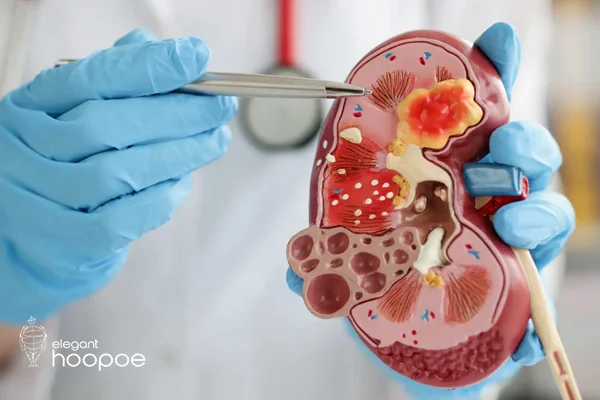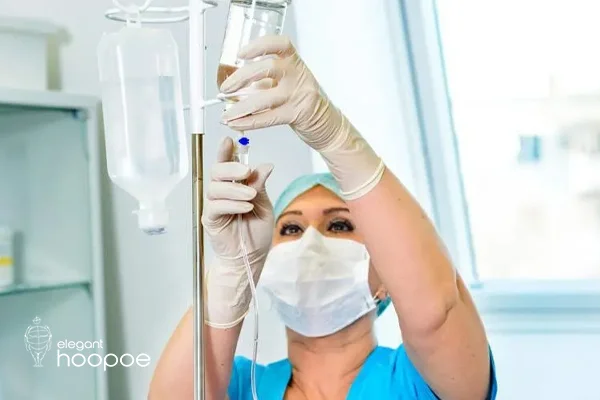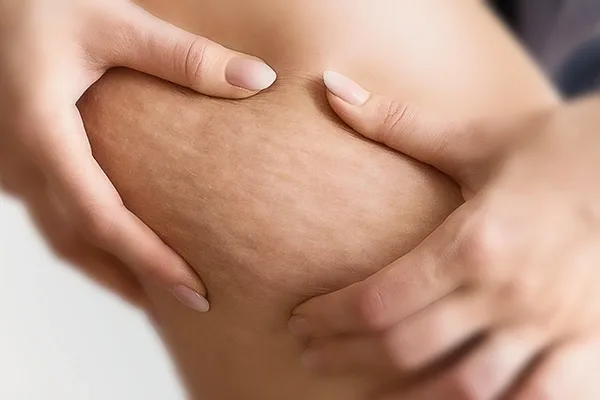Can IV Fluids Help Remove Kidney Stones?
Kidney stone IV fluids play a key role in hydration therapy, helping flush out small stones and prevent new ones. Benefits include:
- Increased urine flow: Helps wash out kidney stones naturally.
- Pain relief: Reduces discomfort by hydrating tissues.
- Electrolyte balance: Magnesium, potassium, and sodium support kidney health.
- Prevention: Dilutes urine to lower stone formation risk.
While IV fluids can aid in passing small stones, larger ones may require additional treatments like medication or lithotripsy.
IV hydration is a targeted treatment involving fluids, vitamins, and electrolytes delivered directly to the bloodstream. This encourages faster hydration by replenishing vital nutrients. This kind of treatment is effective for people experiencing sickness, going through intense workouts, or suffering from other dehydration-related medical ailments. That brings up the benefits of IV fluids for kidney stones. Treatment through IV hydration targets increasing recovery times, boosting energy levels, and increasing general wellness.
What are the IV hydration treatment steps?

Usually, receiving IV hydration treatment involves the following steps:
- Preparation: in this step, the healthcare practitioner will explain the procedure, evaluate your health, and ensure appropriate IV access.
- IV Insertion: To create an intravenous line, a medical practitioner will clean your skin and insert a needle into a vein, typically in your hand or arm.
- Fluid Administration: Through the IV line, sterile saline or electrolyte solution will be administered at a regulated pace, monitored by a digital pump. Your demands for hydration determine the volume and duration.
- Monitoring: During the procedure to make sure you are benefiting from the medication; your vital signs and symptoms will be controlled continuously.
- Completion: The IV line will be removed, the area will be cleaned, and wrapped once the recommended quantity of fluid has been given.
- Post-treatment Care: Following the session, you can get food and water advice to help maintain kidney function.
Read about Home IV therapy
As procedures might differ, always pay close attention to the directions given by your healthcare practitioner.

Kidney stone and its reasons
Due to dehydration or some abnormalities in the composition of urine, kidneys may develop hard mineral and salt deposits called kidney stones. Some common causes are infection of the urinary tract, uric acid crystals, high levels of calcium or oxalate in the urine, and diseases that affect specific metabolic processes. Kidney stones may also develop based on the influence of some dietary factors, such as obesity, inadequate fluid intake, and high sugar or salt consumption. Also, the possibility of having kidney stones in an individual may be raised due to family background.
IV Hydration Treatment Benefits for Kidney Stone

By increasing fluid intake and stimulating urine output, IV hydration treatment can help remove kidney stones by flushing the stones out of the urinary system. Quick fluid infusion helps smaller stones flow naturally via the ureters and into the bladder by reducing the concentration of chemicals that might form stones. Furthermore, being well hydrated helps reduce pains that are caused by kidney stones, which enhances both the general health of the kidneys and the comfort of the patient.
See also IV Hydration Therapy Benefits
Mineral and vitamins used in IV hydration treatment
Vitamin B6 and vitamin C are commonly used in IV hydration treatment for kidney stone removal, together with fluids and electrolytes, such as magnesium, potassium, and salt. Magnesium assists in preventing the production of certain forms of stones, such as calcium oxalate stones; whereas, on the other hand, potassium and sodium improve the kidney’s function and fluid balance.
Vitamin B6 is known to be a good option to lower oxalate levels in urine, and the properties of Vitamin C can help dilute urine, which eventually reduces the risk of stone formation. The fluids themselves also establish an acceptable level of hydration, which is necessary to remove stones from the urinary system.
Related article: IV Therapy Side Effects
Number of IV hydration treatment sessions needed to achieve the best result

The size and type of kidney stones, along with the patient’s level of hydration and general health conditions, play a great role in determining how many IV hydration treatment sessions are needed to ensure the effective and durable removal of kidney stones. Generally, a physician may recommend the number of sessions, spaced over several days, to maintain hydration and support the body’s natural processes in eliminating kidney stones. Smaller stones can at times be treated in one session only, but larger or more stubborn stones may require more than one session.
What do you know about weight loss effects on Kidney diseases?

To-do list before and after IV hydration treatment sessions
Regarding active diseases or drugs, you might be using, it’s important to consult a doctor before starting any kind of IV hydration treatment for removing the kidney stone to ensure that you are an appropriate candidate for it. It is also very vital to keep up the hydration and drink healthy fluids in the days leading to the treatment session.
Also, plentiful water must be consumed even after the treatment session, so that the body is well-hydrated and hence helps in passing the remaining stones easily, along with restriction on further formation. Watch for signs of infection or complications including fever, changes in urinary pattern, or increased discomfort, and consult your health professional if you have any concerns.
Read more about How do you Feel After IV Therapy?
Final word, Can IV hydration treatment remove kidney stones completely?
For minor kidney stone problems, IV hydration treatment is highly effective by providing fast hydration, pain relief, and balanced electrolytes and it also helps to prevent the formation of new stones. But in severe cases and for larger stone sizes, additional medical interventions, such as medication, shock wave lithotripsy, or surgical procedures may be necessary in order to make the IV hydration treatment more effective and allow it to do its job properly.






